T-Mobile Sidekick Slide Review
T-Mobile Sidekick Slide
The Sidekick loses its swivel and gains a slide, but will it still cut it?
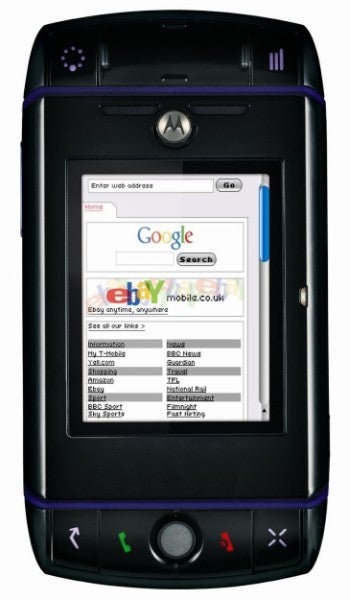
Verdict
I’ve never been convinced by the ‘yoofy’ IM-generation oriented Sidekick. Too big, too clunky, too mid-range in specs, I always thought.
Early in 2007 the Sidekick 3 didn’t bowl me over, but then I hadn’t been very impressed by earlier versions of the device, either. But T-Mobile clearly is smitten, and now brings the latest version, renamed the Sidekick Slide, over from the US.
In both software and hardware terms the Sidekick Slide is similar to its predecessors, A key selling point of the Sidekick Slide is the ‘Web portal’. 
Basically everything you store on the Slide is automatically backed up to a password protected Web site. You can get to this information from any computer, and make edits or changes, which are themselves transferred back down to your Slide.
This means not only can you make diary changes and suchlike without fiddling with the Sidekick Slide itself, but you have a backup if your device gets lost – and one which can be downloaded to a replacement Slide.
T-Mobile may be crowing about the Slide being the smallest, slimmest Sidekick yet, but the device is still big for a mobile phone at 60 x 110mm, 17mm thick and a hefty 150g.
Motorola has taken over the design from Sharp, and this has had a huge effect on look and feel. A black and blue livery replaces the black and silver of the Sidekick 3. Unfortunately, the plastic used for the casing is a bit of a fingerprint magnet.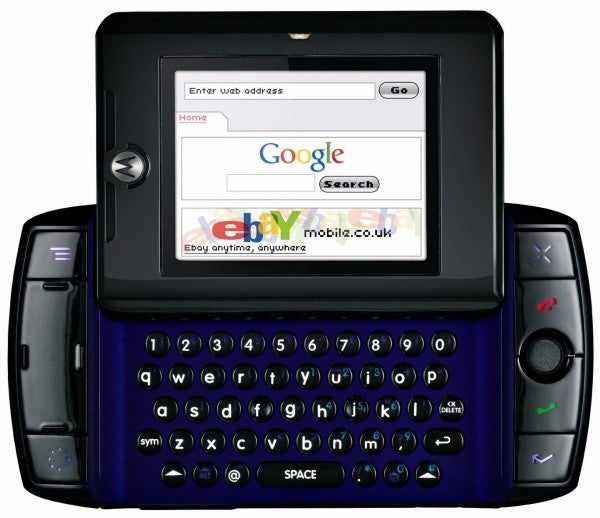
In the reworking of the Sidekick’s looks it has lost a real wow feature. All previous Sidekicks have had a ‘flip and swivel’ screen. You pushed at the screen’s top right edge with a finger and it rather boisterously swivelled round 180 degrees to reveal a QWERTY keyboard.
This mechanism was one of the things that made the Sidekick what it was. But it is gone, and the new Sidekick Slide has a much more sedate way of getting to its keyboard. You simply slide the screen section upwards. Hence the name, I guess.
However, Motorola has retained many of the other features that made the Sidekick unique. It still has a sideways on orientation, which makes it feel more like a games console than a mobile, and means you have to hold it in both hands to use the mini keyboard.
The device controls are very familiar. There is a mini trackball (think BlackBerry Pearl), that sits under your right thumb and is wheeled to get around within applications and menus. Call and End buttons flank this, while outside these again, at the top and bottom right sides of the device, are a Cancel and Done key.
On the left side of the front casing are Menu and Jump keys. The former calls up whatever menu options are available within an application. The Jump key takes you to the main screen, (which in Sidekick-speak is called the Jump Screen). From here you scroll around a carousel of animated icons to move through the applications on the device.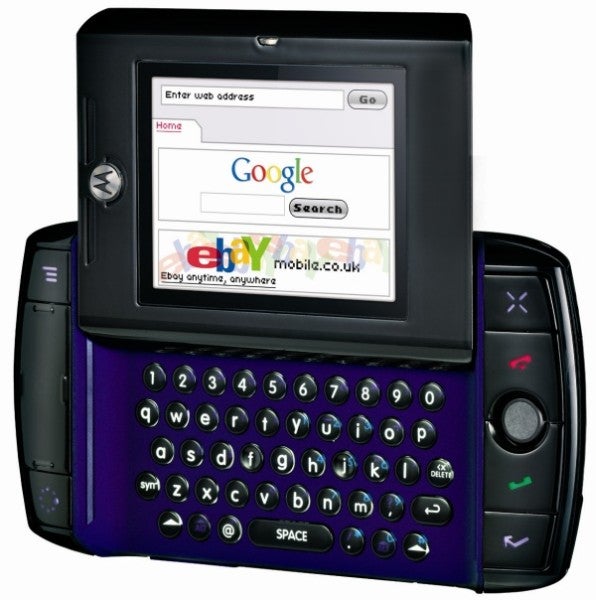
This edge also houses a huge navigation button whose centre has an alert area which will glow various colours at you to give you different kinds of notifications.
There are various shoulder keys too. Two on the left and right top edges have functions which vary depending on what application you are currently using. When the camera is active, for example, the right one captures a shot. When you are on a voice call it toggles the speaker while the left shoulder key mutes a call.
On the bottom edge the left and right shoulder keys are the power switch and volume rocker. Meanwhile on the right edge there is a mini USB jack for mains power and PC connection, and a 2.5mm headset jack. For such an unashamedly consumer focussed device I can’t understand why a 3.5mm connector was not used. 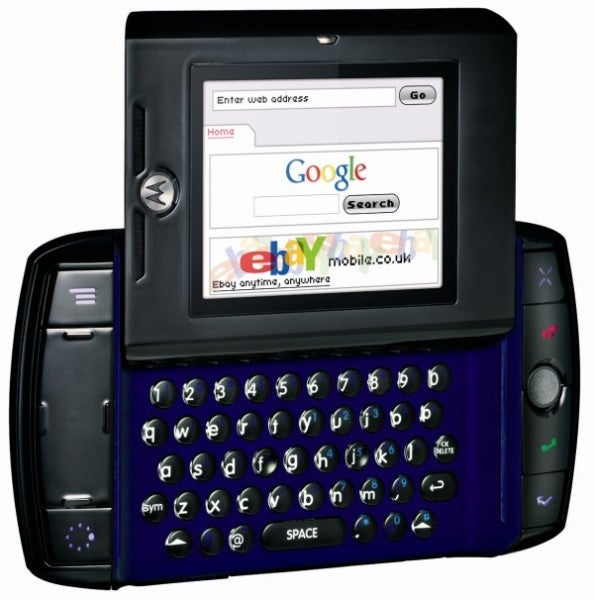
The keyboard comprises a QWERTY set and a number row. The keys themselves are round dots in a sea of blue background and because of the slide-up screen they are quite deeply recessed in relation to the side edges.
Characters on the keys are marked in white, symbols in blue, and in some cases also embedded numbers in yellow. The symbols are marked very small and are a bit hard to spot against the blue background to the keyboard. All in all, this was a pretty difficult keyboard to use and those with larger fingers could be stymied by it. Even I, with relatively dainty digits, found it quite fiddly.
Compared to many modern phones the range of services on board is limited. You’ve got voice calling and the Sidekick Slide is Quad band GSM with GPRS.
The 320 x 240 pixel screen measures 2.4 inches corner to corner, and some web pages are rendered on the browser quite well. GPRS data speeds are dealt with up to a point by server-side stuff that tweaks pages for faster downloading. But not all sites are rendered well and there can be a lot of scrolling to be done to view the full content of a page. I found the browser to be a bit hit and miss, and at times very frustrating.
A music player copes with MP3, WMA, and AAC files. I got a very impressive thirteen hours 50 minutes of continuous playback from a full battery charge.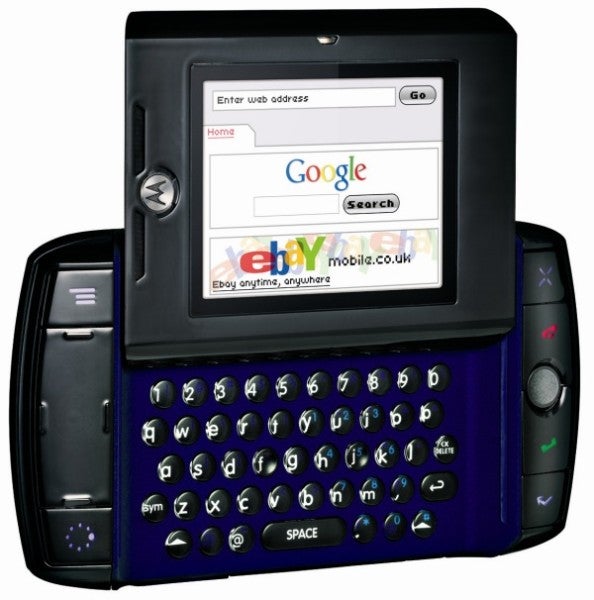
There is mobile email support, and the Sidekick Slide comes with its own email address as well as the ability to pick up email from POP3 accounts. But it only copes with three POP3 accounts. I’m sure many of us have more than three email addresses so this could prove quite a limitation.
The built in camera is woeful, shooting at 1.3 megapixels and lacking video support. MMS and SMS are supported, and a key selling point of the Sidekick Slide is its IM service. You are limited to Yahoo IM though, which is pre installed. There is also a calendar, to-do manager, notes application and a couple of games and you can download a couple more over the air.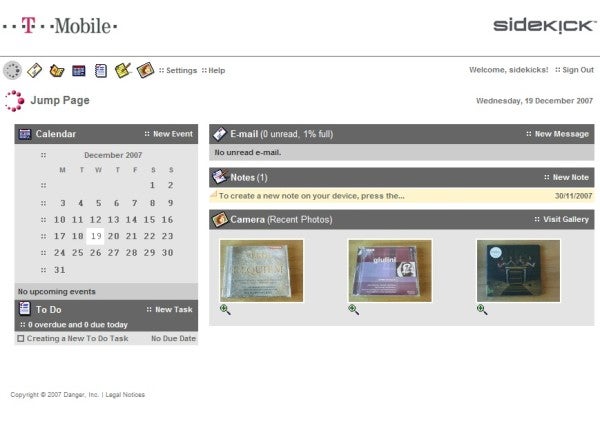
There is 128MB of built-in memory and microSD card support. A card will be necessary as the internal memory is rationed fairly strictly. You are allowed to save 1.75MB of photos, for example, with more going on the microSD card. Beware though, as card stored photos don’t back up to the Web automatically, which could prove to be a real annoyance.
”’Verdict”’
Despite the design update, I’m still not convinced by the Sidekick Slide, which even in its new slimline format is chunky. I do like the idea of Web based backup, but it isn’t ergonomic for voice calling, and the mini keyboard is very tricky to use, while the camera is simply below par.
How we test phones
We test every mobile phone we review thoroughly. We use industry standard tests to compare features properly and we use the phone as our main device over the review period. We’ll always tell you what we find and we never, ever, accept money to review a product.
Trusted Score
Score in detail
-
Usability 6
-
Value 7
-
Features 6

